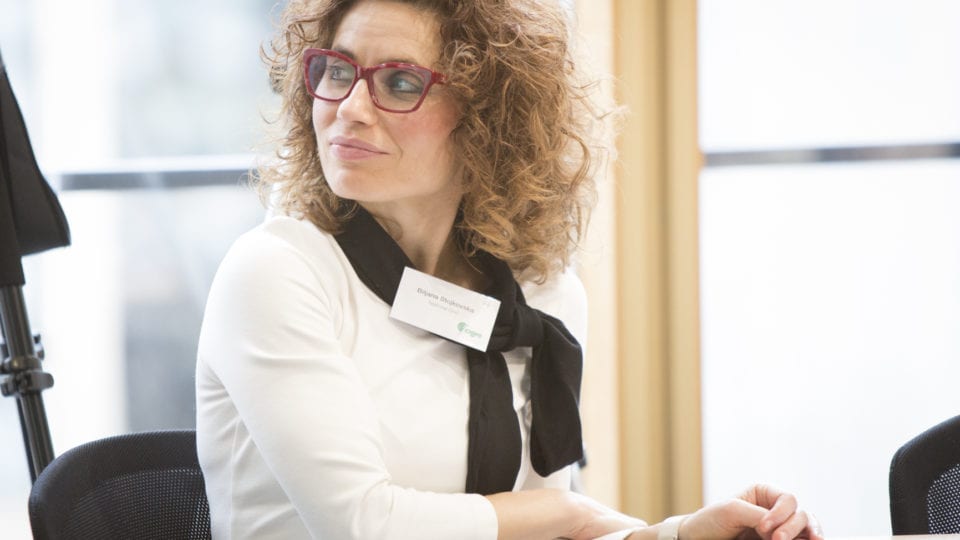Power Potential: unlocking hidden potential
Dr Biljana Stojkovska, National Grid Power Potential Project Lead, discusses the work the electricity system operator is doing in partnership with UK Power Networks.
27th March 2018 by Networks

The electricity system is in a period of transition and moving to a lower carbon and more distributed model. There’s a shift from energy predominately being supplied by transmission connected generation to a world that includes large volumes of distribution connected generation, flexible demand and storage. This requires a new approach for the commercial and technical operation of transmission and distribution networks.
This transition presents significant opportunities for Distributed Energy Resources (DERs) to contribute to the overall system efficiency and reduce costs to consumers. However, we must also be mindful of the technical challenges of maintaining the high standards of reliability and safety that customers expect. To maximise benefits and address challenges, we must adopt a ‘whole system’ approach that optimises operations and investment across distribution and transmission networks.
The Power Potential project, led by National Grid in partnership with UK Power Networks, is a world first whole-system innovation project, examining the future of dynamic voltage control by distributed energy resources. Under dynamic voltage control we understand the fast change of reactive power output to regulate the voltage. The aim of the project is to join up the network design and operation processes across transmission and distribution to ensure the most efficient decisions are made across all networks, accelerating connection timescales and reducing the investment needed in transmission and distribution networks.
Power Potential is a three-year project which focuses on the South East of England – a complex and challenging region to operate. Right now, it’s at the limit of its capacity for both exporting and importing power from the rest of the transmission system.
The voltage stability problem on transmission system can be resolved by dynamic voltage control from DER. If successful, the new model could be introduced to 59 other regions in GB transmission system, potentially saving an estimated £412m for UK consumers by 2050.
In Power Potential’s first year, we have been focusing on designing the system to manage distributed energy sources can provide the services we need – both reliably and in real-time. We are now engaging with DERs to recruit them for next year’s trial.
Initial signs look like it’s feasible, so when we have concluded our trials, we’re hoping to look at developing a market of new services that can be provided by DER.
Power Potential will give distributed energy businesses significant new opportunities to earn additional revenue.
Above all the project will see us, the electricity system operator, collaborating more closely with distribution network operators as we aim to prove that a joined-up whole-system approach can be beneficial for everyone – from network operators to generators to end consumers.
To ensure transparency the Power Potential project has one of the world’s most respected energy lawyers Dame Fiona Woolf acting as the independent chair of the Regional Market Advisory Panel.
So far the lessons learned from the project are that:
1. Close collaboration between two network companies with different philosophies and cultures is essential.
2. Innovation has to be tempered with keeping the lights on.
3. Trailing the market based solution does not guarantee success.
4. Exploring the needs of potential participants is a key to success.
5. Issues such as cyber security, confidentiality and access to data are a hidden complexity.
The Power Potential project looks across the whole-system landscape to identify key areas of development to unlock additional network capacity, reduce constraints and open up new revenue streams for market participants. This project will significantly enhance transmission and distribution systems coordination and control, creating whole system efficiencies and providing new tools and resources to manage system constraints – ultimately reducing costs for customers.
The project aims to foster an innovation environment that supports the effective management of the electricity network on a ‘whole-system’ basis. At the same time, it supports the development of DSO capabilities. Strong working-level relationships and an effective governance structure, form an agile, collaborative environment in which challenges can be carefully considered.
Dr Biljana Stojkovska will be speaking at Network’s Future Networks Conference in Birmingham in April.
Comments
Login on register to comment
Related content

Power
The future for vegetation management
Why networks should focus on data not trees to overcome the costly challenges involved in vegetation management

Power
An unprecedented opportunity for change
Why short interruptions will matter in RIIO-ED2 and how to address them.

Power
Time for less talk and more action on decarbonisation
Core "oven-ready" solutions to decarbonising heat and transport exist today and should be implemented without delay, says WPD's future power networks expert.
Related supplier content
![‘Learning by doing’ on the road to net zero [test product]](https://networksonline.s3.amazonaws.com/products/images/3.jpg)
People & Skills
‘Learning by doing’ on the road to net zero [test product]
DSO director Andrew Roper discusses 'Learning by doing'

Power
Load patterns and lockdown: how Covid-19 is impacting electricity networks
Insights into dynamics on the low voltage network as the outbreak unfolds

Downloads
Protect electrical equipment from insulation failure
Insulation faults are a major cause leading to the eventual failure of electrical equipment. Partial discharge (PD) is a very reliable indicator of developing insulation faults. Regular PD testing allows users to detect and analyze PD activity